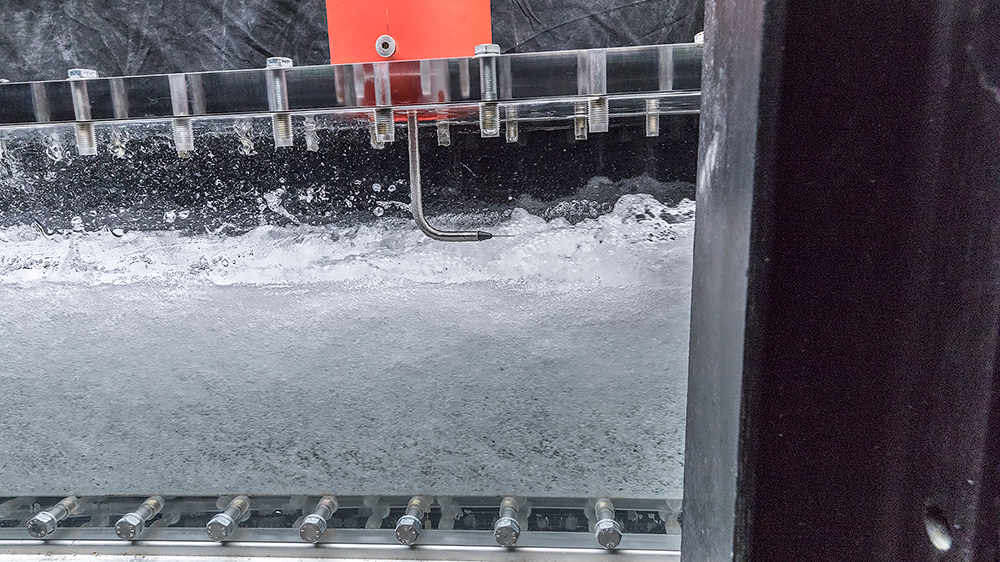A hidden bias on bubbly flows
A recent study by an international team from ETH Zurich, IHE Delft and UNSW identified a significant bias in these measurements and developed a correction scheme.
A recent study by an international team from ETH Zurich, IHE Delft and UNSW identified a significant bias in these measurements and developed a correction scheme.

Gas-liquid flows occur in a wide range of natural systems and technical applications. Flow velocities in gas-liquid flows are typically measured with so-called phase detection intrusive probes, comprising two needles which pierce bubbles and droplets. A recent study by an international team from ETH Zurich, IHE Delft and UNSW identified a significant bias in these measurements and developed a correction scheme.
Accurate measurement of flow velocities is of importance for many engineering applications as well as our coastal, estuarine and riverine environments. In many natural environments such as breaking waves, river rapids and waterfalls, strong turbulence leads to aerated flows (white waters). In human-made systems, air-water flows can be found in water treatment systems, nuclear reactors and flow conveyance infrastructure. Under these conditions, proven standard flow measurements do not work and since the 1960s, researchers and engineers have used specific air-water flow probes that are placed inside the flows. Using these probes, allowed to improve our understanding of flow processes as well as engineering design. However, while most research looked at the air bubbles inside the flows, this study looked at the probe itself.
Experiments conducted by the international team showed that previous measurements underestimated interfacial velocities in many applications. In this research, published in the prestigious journal Nature Communications, the team compared typical air-water flow measurements by state-of-the-art phase-detection intrusive probes with a laser instrument, showing that velocity estimates with intrusive probes were systematically lower compared to the ground truth. Untangling all forces during the interactions of the phase-detection probe tips with the flowing air-water entities, the researchers showed that particle-probe interactions resulted in a deceleration of the recorded interfaces and a systematic bias in velocity estimates. This means that spillway flows, for instance, might be flowing faster than expected during their design.
The paper is open accessible here: https://www.nature.com/articles/s41467-021-24231-4
Hohermuth, B., Kramer, M., Felder, S., Valero, D. Velocity bias in intrusive gas-liquid flow measurements. Nat Commun 12, 4123 (2021). https://doi.org/10.1038/s41467-021-24231-4